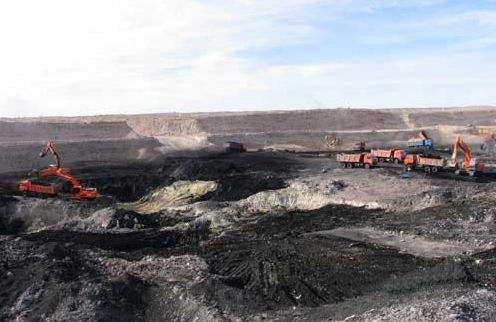Call the Underground Treasures
2 min readThe oil glowing golden light is only one of the buried treasures sleeping deep under the earth in Xinjiang.
Coal, the black gold, is the ancient jungle accumulating the sun flames of millions of years. Under the call of Xinjiang people, it begins to gush out the infinite heat and light.

The exploitation and utilization of coal in Xinjiang was originated in the Han Dynasty.
From the Han Dynasty to the founding of the PRC in 1949, the coal mining industry in Xinjiang adopted the indigenous mining method by small coal mines. Before the liberation, there was only one official coal mine in Badaowan, Dihua(Urumqi now), with the annual output of less than 10,000 tons, and all the other mines were private small mines, with simple mining equipments and original methods, digging by pickax, transporting by people and livestock, the labor productivity is very low.

In 1949, the total coal production in Xinjiang was only 179,800 tons. However, after 60 years of development, the production condition of Xinjiang coal industry has been greatly improved, and the output has also been rapidly increased.

The coal reserves in Xinjiang is very amazing, with the prognostic reserves of 2.19 trillion tons, accounting for 40% of the total prognostic reserves in China. Based on the abundant coal resources, Xinjiang has proposed the strategy of conversion of coal resources-to accelerate the construction of the commodity coal base, with Turpan-Hami as the principal part, for “West-East coal transmission”, the “West-East electricity transmissio”base with Zhundong as the principal part, the coal chemical base with Ili and Zhundong as the principal part, and the coking coal base with Kubai as the principal part, with the aim of building Xinjiang the largest coal deep-processing base in China.









